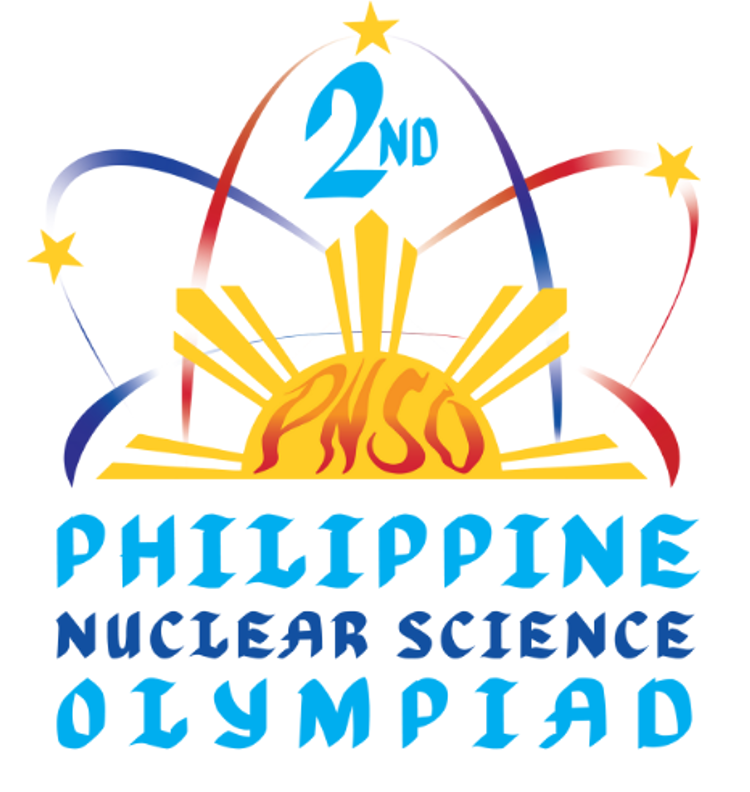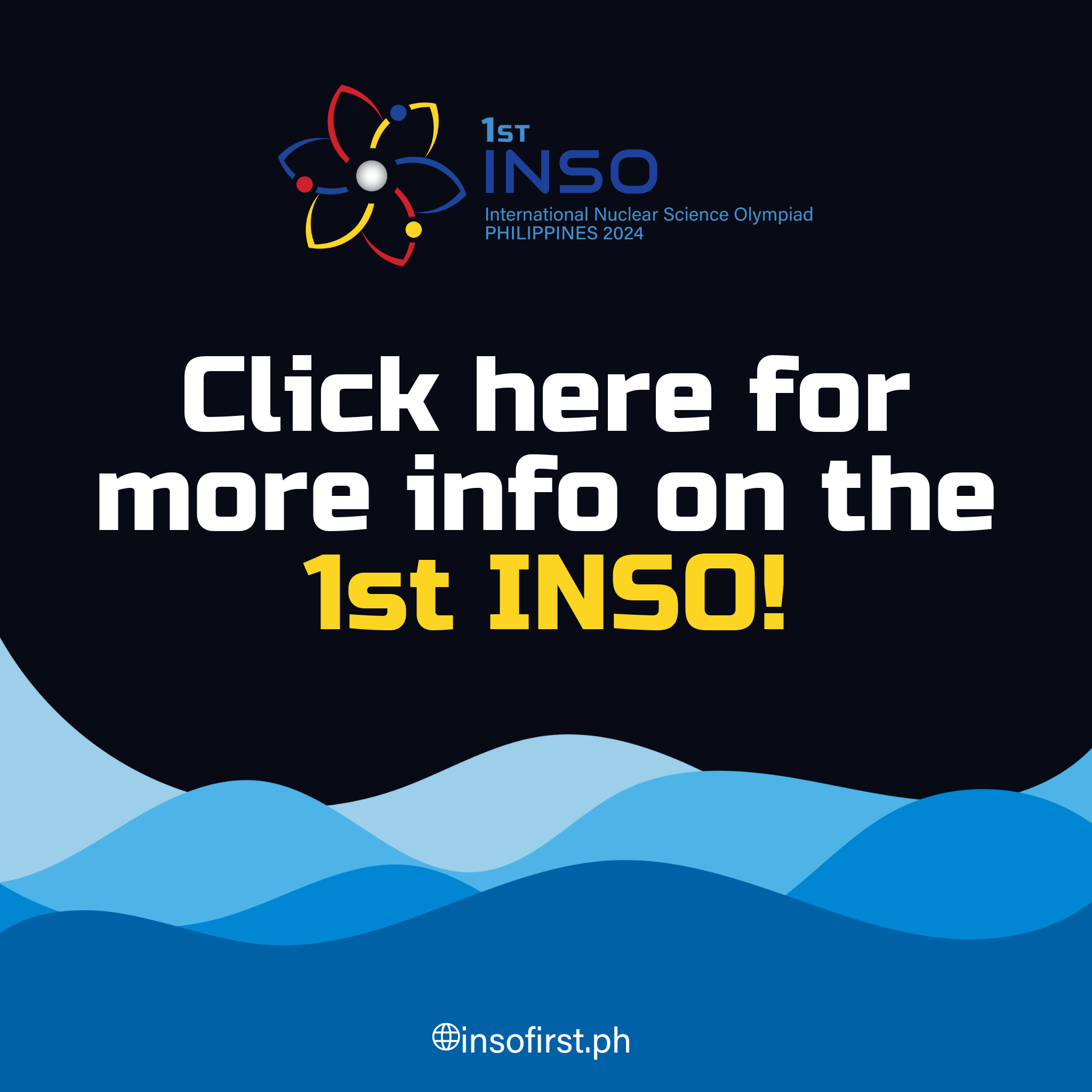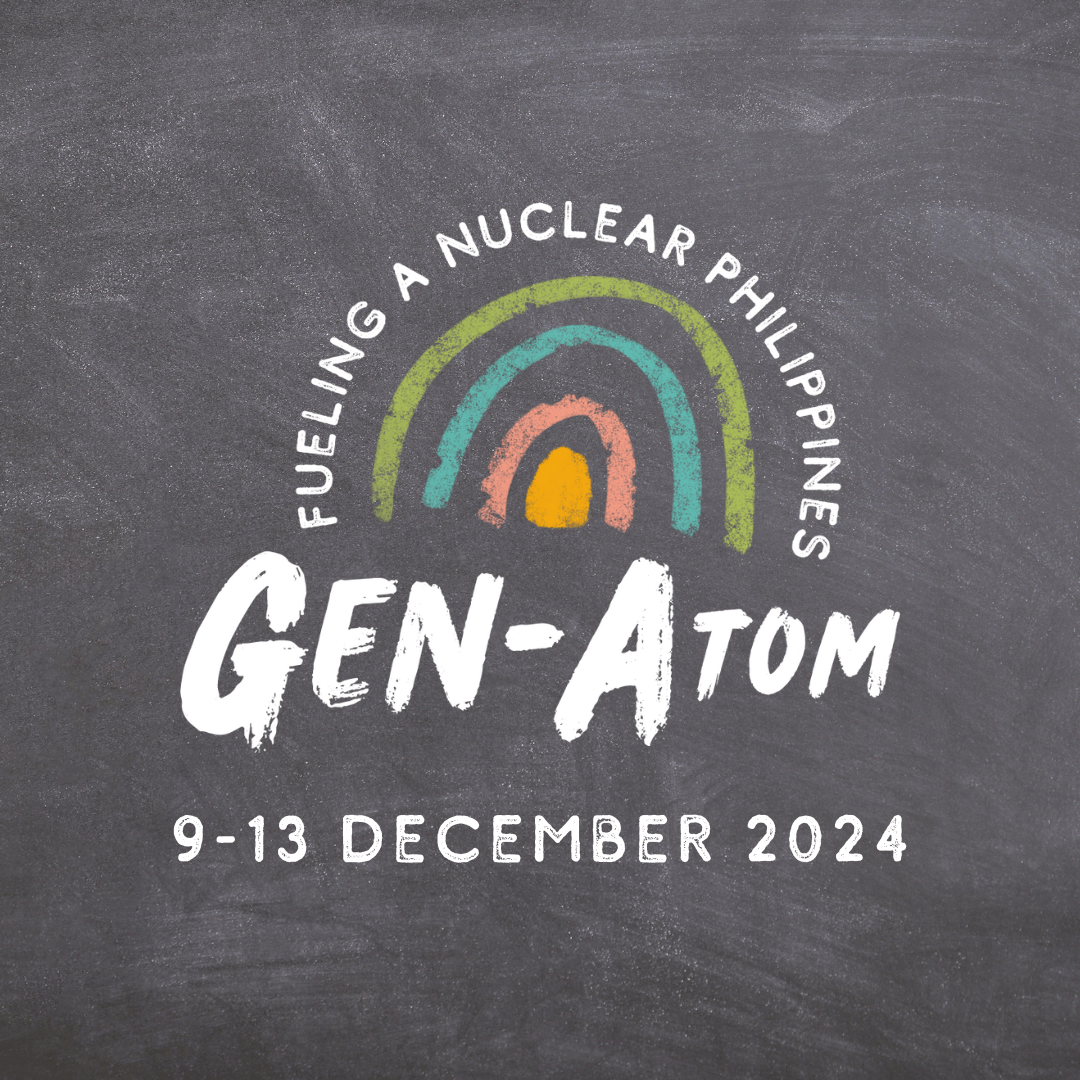High School and University Faculty Develop Teaching Modules and Present Case Studies on Nuclear S&T
- Details
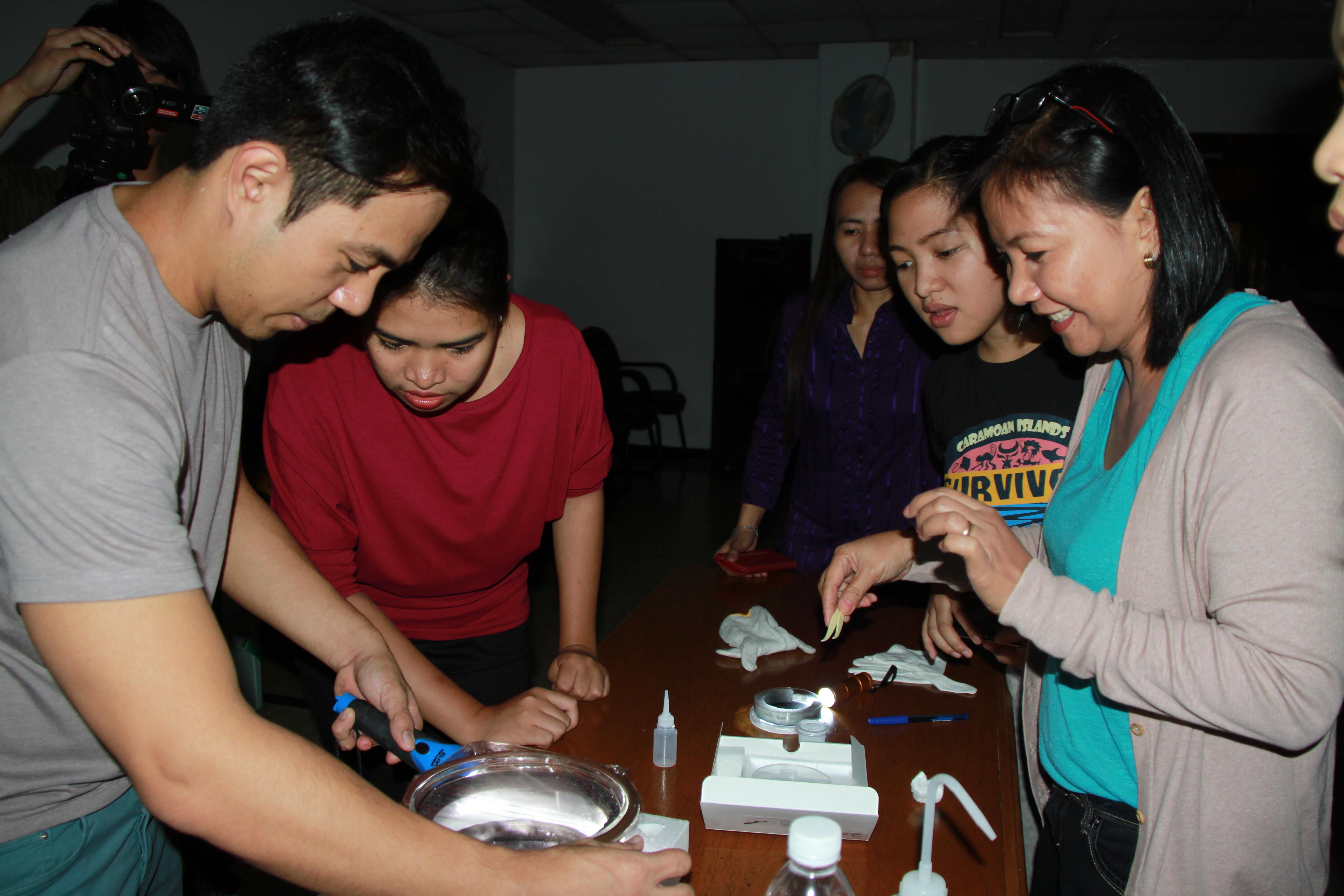
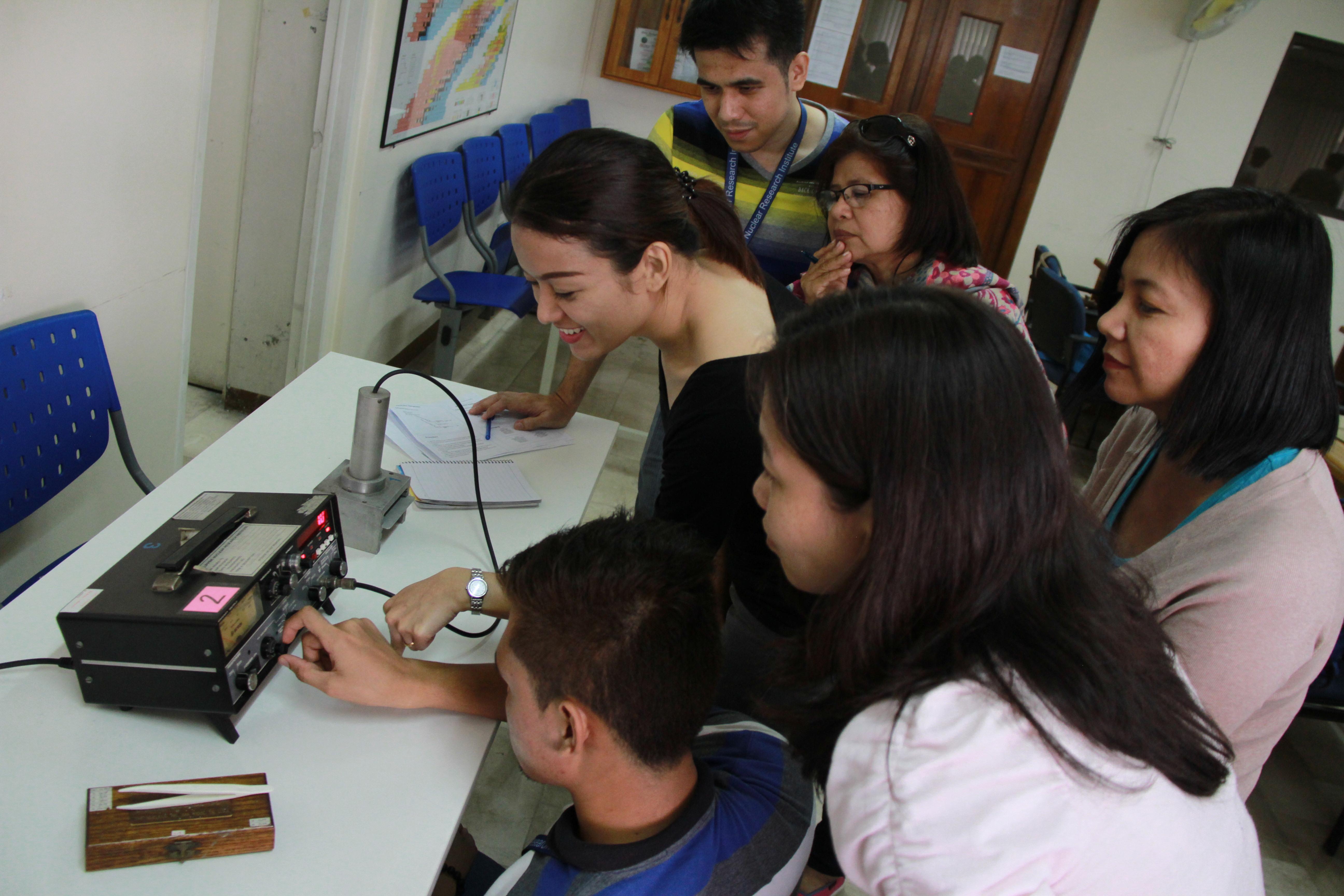
Left Photo: The participants conduct the cloud chamber experiment to see the tracks of radiation emanating from the radioactive source. The experiment was supervised by high school teachers involved in the International Atomic Energy Agency educational outreach program on nuclear science and technology for secondary schools
Right Photo: A radiation measurement activity being conducted at the PNRI Nuclear Training Center
Halfway this summer, teachers from secondary schools and instructors from universities and colleges spent the rest of the vacation grappling with equations and formulas as they studied nuclear science and technology to develop teaching modules and case studies under the tutelage of experts from the Department of Science and Technology – Philippine Nuclear Research Institute (DOST-PNRI).
This May, the faculty felt the nostalgia of being students once again during the Course on Nuclear Technology (CNT) and the Seminar on Nuclear Science for Teachers (SNST) conducted by the PNRI Nuclear Training Center. University professors and graduates from De La Salle University, Cagayan State University, University of Eastern Philippines and University of the Philippine Los Baños participated in the CNT. The SNST participants are composed of science teachers from several secondary schools in Metro Manila and Luzon.
Also among the participants are teachers from Quezon City Science High School and San Francisco High School, who are currently serving as pilot schools for an outreach program for high schools on nuclear science and technology. The outreach program is under the International Atomic Energy Agency (IAEA) Project RAS/0/065 on Supporting Sustainability and Networking of National Nuclear Institutions in Asia and the Pacific Region.
Quality Management Systems for Better Marine Radiological Data
- Details

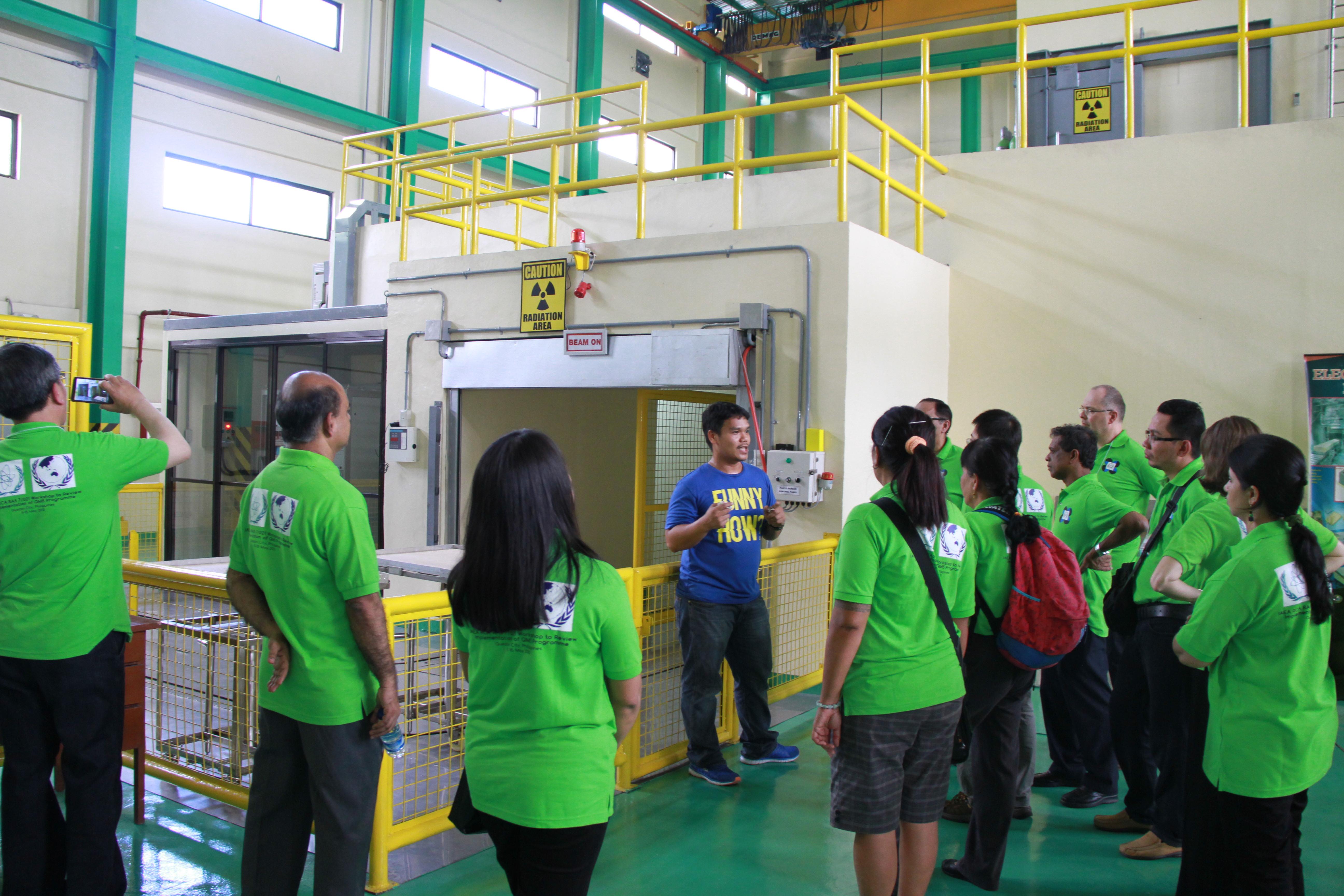
Left Photo: PNRI Director Dr. Alumanda Dela Rosa (1st row, 4th from left), IAEA expert Mr. Peter Vermaercke (2nd row, 5th from right) and Lead Country Coordinator Mr. Ronald Szymczak (2nd row, 6th from left) with the representatives from several countries in the Asia-Pacific Region at the Crowne Plaza Manila Galleria.
Right Photo: The international participants listen to the briefing of the PNRI Irradiation Services Section at the Electron Beam Facility
Marine environmental radioactivity monitoring experts and researchers from the Asia-Pacific region met in the Philippines early this May to improve the research capability to provide better marine radiological and environmental data with more stringent and intensive reviews of each country’s quality management systems.
From May 11 to 15, the Department of Science and Technology – Philippine Nuclear Research Institute (DOST-PNRI) hosted a Workshop for Review Implementation of Quality Management Systems at the Crowne Plaza Manila Galleria in Quezon City. The workshop was conducted through the efforts of the International Atomic Energy Agency (IAEA) and the Regional Cooperative Agreement for Research, Development and Training Related to Nuclear Science and Technology in the Asia-Pacific Region (RCA).
Read more: Quality Management Systems for Better Marine Radiological Data
National Workshop on Threat Assessment and Design Basis Threat
- Details

International Atomic Energy Agency experts Mr. Albertus Hendricus Dal (1st row, extreme left), Mr. Sung Soon Jang (1st row, center and Mr. Anthony Aragon (1st row, extreme right) with PNRI Director Dr. Alumanda Dela Rosa (1st row, 2nd from left), Nuclear Safeguards and Security Section Head Ms. Julietta Seguis (1st row, 2nd from right) and the participants of the national workshop from various agencies.
Highlighting the continued cooperation between government agencies in the field of nuclear securit, the Department of Science and Technology – Philippine Nuclear Research Institute (DOST-PNRI) hosted the National Workshop on Threat Assessment and Design Basis Threat from April 21-24 at the PNRI Compound in Diliman, Quezon City. The workshop was conducted in cooperation with the International Atomic Energy Agency (IAEA).
This workshop was held under the Integrated Nuclear Security Support Plan (INSSP), of which the Philippines is an active partner in its implementation.
Read more: National Workshop on Threat Assessment and Design Basis Threat
Follow-Up Training Course on Reactor Engineering
- Details
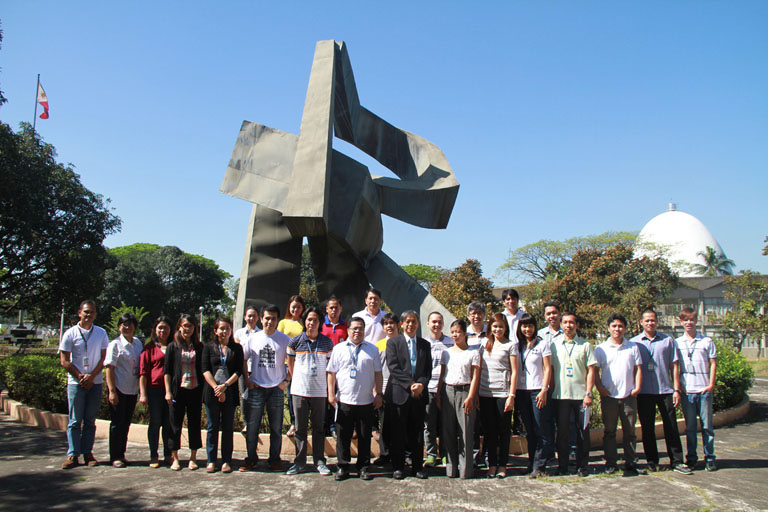
Top Photo: PNRI Nuclear Training Center Officer-in-Charge Mr. Roel Loteriña (1st row, 8th from left), PNRI FTC Course Coordinator Mr. Carl Nohay (1st row, 4th from right) and Dr. Nobuyoshi Arai of the Japan Atomic Energy Agency (1st row, 8th from right) join the participants and lecturers of the training course

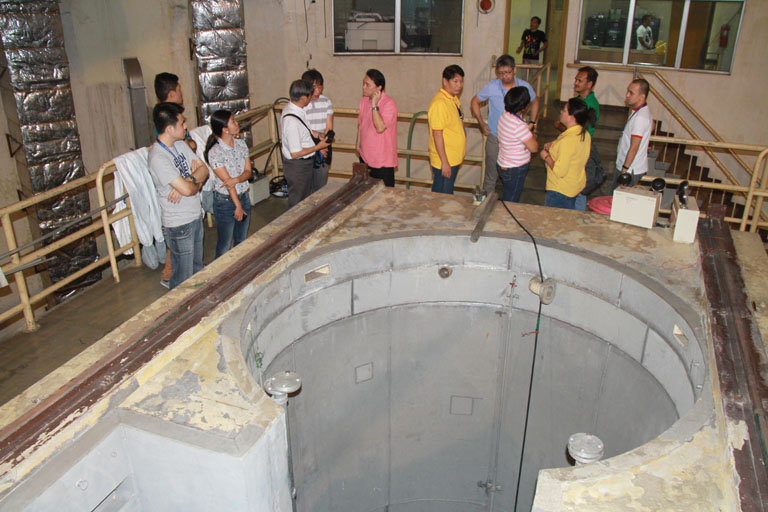
Bottom Photos: Participants visit the control room (left) and reactor pool (right) of the Philippine Research Reactor-1 (PRR-1) at PNRI
The Department of Science and Technology – Philippine Nuclear Research Institute (DOST-PNRI) in cooperation with the Japan Atomic Energy Agency (JAEA) conducted the Follow-up Training Course on Reactor Engineering from March 2 to 13 at the PNRI Nuclear Training Center.
Fifteen participants from the National Power Corporation, Philippine Normal University, Surigao Del Sur State University and Bagong Silangan High School joined the two-week training course which covered the basics of nuclear reactor physics and reactor operation among others. Researchers from PNRI also participated in the course.
Three experts from the Japan Atomic Energy Agency (JAEA), Dr. Nobuyoshi Arai, Dr. Masanori Kaminaga and Dr. Keisuke Okumura, supervised the training course. The lecturers were Dr. Joseph Auresenia, Chemical Engineering Department Chairman of De La Salle University) and ten PNRI staff: Mr. Carl Nohay, Mr. Nelson Badinas, Ms. Kristine Marie Romallosa, Mr. Alfonso Singayan, Mr. Giuseppe Filam Dean, Ms. Alvie Asuncion, Mr. Joseph Tugo, Ms. Cheri Anne Dingle, Mr. Adrian Cruz and Ms. Marianna Lourdes Marie Grande.
Lectures and exercises focused on the basics of radiation physics, nuclear energy production, radiation detection, and the neutron life cycle in a reactor. The participants were familiarized with existing reactor technologies and nuclear reactor calculations and were also taught the basics of thermal hydraulics and reactor safety. Experts also facilitated several experiments on radiation measurement and survey, reactor operation simulation and neutron moderation.
The Japanese experts also conducted special lectures for the FTC lecturers and selected participants, focusing on advanced concepts on reactor physics and nuclear engineering, reactor calculations and thermal hydraulics in reactors during various conditions.
Participants were also given a guided tour of various nuclear facilities in the Philippines, particularly the Bataan Nuclear Power Plant and the Philippine Research Reactor-1 at PNRI. They also visited other facilities of PNRI such as the Secondary Standards Dosimetry Laboratory, the Cobalt-60 Multipurpose Irradiation Facility and the recently inaugurated Electron Beam Facility.









